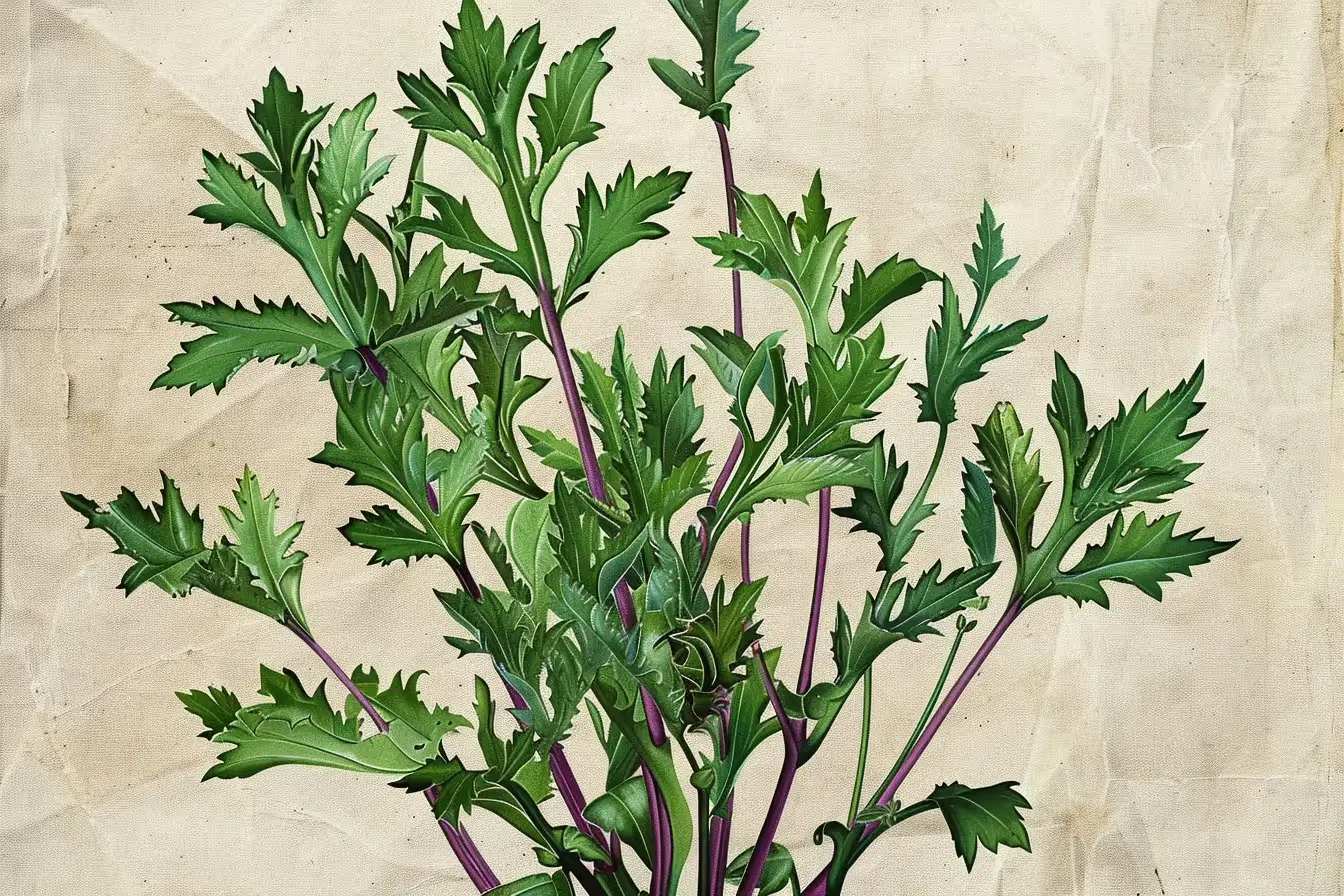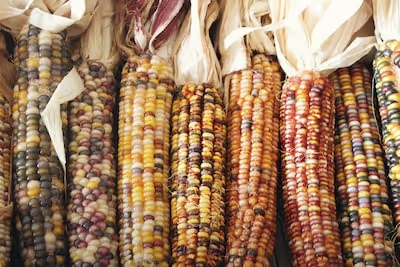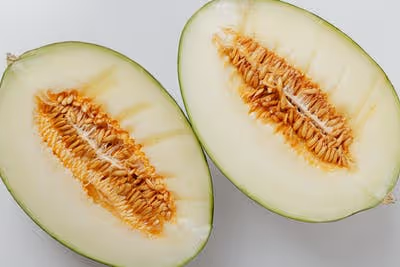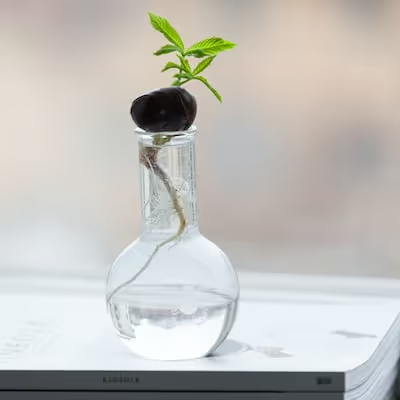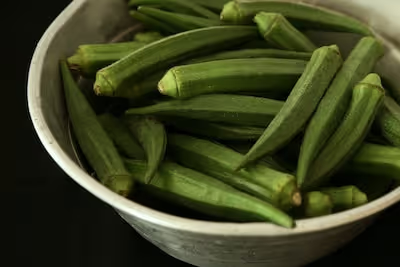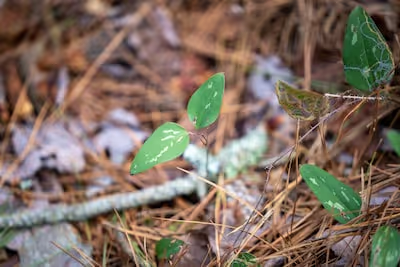Growing Samphire: A Gardener's Guide to Coastal Harvest

Growing Samphire
Growing samphire pairs a bit of salty swagger with smart coastal gardening. To start growing samphire, plant seeds in gritty, sandy soil mimicking their seaside digs, water sparingly using salty water, and pick a spot with full sun exposure. Keep reading to discover how to cultivate this salty gem right in your own backyard.
Cheatsheet: Samphire Coastal Cultivation Strategies
🌊 Site & Conditions
- Full sun.
- Sandy, saline soil. Amend with sea sand and sea salt if inland.
- Soil pH 6.5–8.0.
- Hardy: USDA 3–9 / -40°F to 25°F (-40°C to -4°C).
🌱 Sowing & Planting
- Sow March–May: Indoors or under cover.
- Seed depth: ⅛ in / 4 mm. Surface sow; lightly press.
- Keep moist with saltwater (1 tbsp/gal or 15g/L sea salt).
- Transplant after 3–4 true leaves, 8 in / 20 cm apart.
💧 Water & Care
- Water regularly with diluted saltwater.
- Avoid waterlogging; well-drained raised beds ideal.
- Mulch with seaweed for minerals; fertilize rarely.
✂️ Harvest
- 8–10 weeks from sowing to first harvest.
- Use scissors for succulent, young tips. Older stems toughen.
- Yield: Up to 1 lb (0.45 kg) per m².
🧂 Health & Nutrition
- Rich in iodine, magnesium, vitamin C.
- High in fiber, low in calories.
- Mineral uptake supports thyroid, bone, immune health.
🔧 Tools and Products You'll Need
- Shallow trays or planters
- Sharp scissors
- Trowel
- Sea sand, sea salt, or pre-made saline mix
- Seaweed mulch (optional)
⚡ Fast Facts
- Samphire grows wild on 20% of world’s coastlines.
- Zero synthetic inputs; thrives in saline soils unsuited to most crops.
- Self-sufficiency tip: homegrown samphire stores 5 days refrigerated.
-
Growing Samphire: a gardener’s guide to coastal harvest
I grow samphire on a city balcony, a windy allotment, and a salty strip by the estuary, and it behaves differently in each place. That is the charm and the puzzle of this plant.
What “samphire” means
Marsh samphire is Salicornia europaea and kin, an annual succulent called sea asparagus or glasswort that loves brackish mud. Rock samphire is Crithmum maritimum, a perennial umbellifer with aromatic, carrot-family foliage that clings to sea cliffs.
I grow both, and I treat them like cousins with different appetites. Salicornia wants salt and steady moisture, while rock samphire wants sharp drainage and bright sun.
Where samphire thrives
Salicornia behaves like a classic halophyte, a salt lover that shrugs at saline irrigation up to seawater levels. Rock samphire prefers lean, gritty soil and takes spray, wind, and summer heat if drainage is fierce.
Full sun fuels flavor, and I shoot for 6 to 8 hours. Temperatures from 55 to 80 F, 13 to 27 C, keep growth tight and tender.
Soil, salt, and water
Use a free-draining mix for containers, 60 percent coarse sand, 30 percent fine gravel or perlite, 10 percent compost. In beds, mound a ridge of sandy loam and top with 2 inches, 5 cm, of grit to shed water fast.
For Salicornia, I irrigate with a mild saline solution, 10 to 20 grams of sea salt per liter, 1.6 to 3.2 tablespoons per quart, once weekly, and fresh water the rest of the time. Avoid road salt or softener salt which contain additives.
Do not use raw harbor water in urban areas. Heavy metals and pathogens ruin the crop, and rinsing will not fix it.
“Average ocean salinity is about 35 parts per thousand.” — National Oceanic and Atmospheric Administration
Propagation that actually works
Salicornia from seed is straightforward if you give warmth and light. I sow on the surface in early spring, cover with a whisper of sand, and mist daily until germination in 7 to 21 days.
Pre-soak the seed for 2 hours in mild saline water to wake up its halophyte physiology. Bottom heat at 68 to 72 F, 20 to 22 C, tightens germination windows.
Rock samphire grows cleanly from heel cuttings in late spring. Push 3 to 4 inch, 7 to 10 cm, pieces into a gritty mix, and keep barely moist until rooted.
A simple container recipe for Growing Samphire
- Choose a 10 to 14 inch, 25 to 35 cm, wide pot with big drainage holes.
- Fill with the sand–grit–compost blend and top with 0.5 inch, 1.2 cm, of coarse sand.
- Sow Salicornia thinly or set rock samphire starts 6 inches, 15 cm, apart.
- Water to settle, then place in full sun, wind exposure is a bonus for flavor.
- Irrigate twice weekly, one fresh, one saline, and never let the medium slump into sludge.
In-ground setup
Build a raised ribbon bed 6 to 8 inches, 15 to 20 cm, high with 50 percent sharp sand. Mulch with shell grit or pea gravel to keep stems clean and slugs bored.
I salt-water once a week in dry spells and let rain do the rest. In heavy clay, stick to troughs or you will grow sadness.
Feeding and EC sanity
Too much nitrogen blows out watery, bland growth. I feed lightly with seaweed extract every 3 to 4 weeks during active growth.
If you run an EC meter, keep the root zone around 1.2 to 2.0 mS/cm for rock samphire and up to 3.0 mS/cm for Salicornia. Taste your way to the sweet spot, texture tells the truth.
Care calendar
- Late winter: sanitize pots, mix media, order seed or cuttings.
- Spring: sow Salicornia under cover, stick rock samphire cuttings, harden off after last frost.
- Early summer: begin light saline irrigation, thin crowded stands.
- Mid to late summer: harvest tips every 10 days, keep cut surfaces clean.
- Autumn: let Salicornia set seed if you want a self-sown patch, divide rock samphire crowns.
Harvest like a chef, think like a botanist
Clip 2 to 4 inch, 5 to 10 cm, tender tips of Salicornia before stems lignify and turn stringy. Rock samphire gives best flavor from young, lime-green shoots and flowerless side growth.
I harvest in the morning and plunge into ice water for 5 minutes. The snap improves and the brine tone pops after a short chill.
Kitchen notes that earn repeat diners
- Blanch 60 seconds, then shock, then toss with butter and lemon zest.
- Quick pickle with 3 percent salt brine, then a hot vinegar splash for crunch.
- Serve with grilled mackerel or smashed new potatoes and dill.
Troubleshooting
Damping-off hits overwatered seedlings, so use a fan and sand top-dress. If stems turn pale and floppy, dial back fresh water and raise sun exposure.
Red edges signal salt too high, so flush with fresh water twice, then resume a lower dose. Slugs ignore salty stems, yet they love damp rims, so copper tape on pots saves grief.
Ethics and the old cliff trade
“Half way down hangs one that gathers samphire, dreadful trade.” — Shakespeare, King Lear
Foraging from sea cliffs damages fragile plant stands, and it risks your neck. Grow it at home and leave wild patches to birds and beetles.
In some coastal reserves, picking any part of samphire is illegal. Check local bylaws and protected site rules before you snip a single sprig.
Varieties and look-alikes I rate
- Salicornia europaea, fast, tender, classic sea-asparagus flavor, best for salads and quick sautés.
- Salicornia bigelovii, heat tolerant, slightly thicker shoots, good for inland summers.
- Crithmum maritimum, rock samphire, citrus–carrot aroma, perennial and drought tolerant once established.
- Salsola soda, agretti or barba di frate, saline-friendly Italian annual, grassy texture and sweet minerality.
Buying guide for Growing Samphire
- Seed: choose fresh lots labeled Salicornia europaea or S. bigelovii, viability drops after one year.
- Starts: rock samphire plugs from coastal nurseries root faster than home cuttings.
- Media: coarse horticultural sand, not builders’ sand, plus #2 grit or perlite.
- Salt: pure sea salt without anti-caking agents or iodine for consistent mixes.
- Gear: a basic EC meter helps avoid salt burn, and mesh pot saucers prevent soggy bottoms.
Yield expectations
On a balcony, I cut 0.5 to 1 pound, 225 to 450 g, of Salicornia per 12 inch, 30 cm, pot each summer. Rock samphire gives a steady handful every week once crowns mature in year two.
FAO reports fresh Salicornia biomass yields of 7 to 20 tons per hectare under saline irrigation in field trials, which tracks with my pot-scale harvests when scaled down.
Comparisons: salt-loving greens worth a row
- Samphire vs agretti: samphire is juicier and brinier, agretti is grassier with easier germination and quicker regrowth.
- Samphire vs sea kale, Crambe maritima: sea kale is perennial with spring “sea asparagus” shoots that taste nutty, no saline irrigation needed.
- Samphire vs sea beet, Beta vulgaris subsp. maritima: sea beet leaves cook like chard with a coastal wink, handles wind and sand but prefers fresh water.
Safety and taste management
Rinse harvested shoots in two changes of cold water to remove grit and extra surface salt. People on sodium-restricted diets should enjoy small portions or choose rock samphire grown with fresh water.
If flavor skews muddy, you likely overwatered without salt during hot spells. Bring back a low, steady saline schedule and harvest younger tips.
My field notes
A midday sea breeze thickens Salicornia cuticles and tightens the snap, which a fan can mimic on a patio. Rock samphire on a gravel roof tastes cleaner than plants from rich garden beds, so starve it a little for best aromatics.
After storms, I pause saline irrigations for a week because plants pull up extra salts while recovering. This keeps tissues crisp and avoids bitter sap.
Quick start for inland growers
- Use containers the first season to learn your salt and water rhythm.
- Mix a small batch of saline and taste it, it should taste like a mild soup of the sea, not a brine bucket.
- Harvest often to force branching and tender regrowth.
Trusted references
Royal Horticultural Society, cultivation notes for Crithmum maritimum and salt-tolerant ornamentals. Kew Science, Plants of the World Online entries for Salicornia and Crithmum with taxonomy and range.
NOAA, ocean salinity basics used to set irrigation targets. FAO halophyte trials provide yield ranges and salinity tolerance data for Salicornia.
Frequently Asked Questions About Growing Samphire
What type of soil supports healthy samphire growth?
Samphire thrives naturally in saline environments. Plant it in sandy, well-draining soil enriched with saltwater. Adding sea salt periodically helps replicate the coastal conditions it prefers.
How much sunlight does samphire require?
This plant needs ample sunlight; aim for at least 6–8 hours of direct sun exposure daily. Select a garden spot or balcony area facing south or southwest for ideal results.
Can samphire be cultivated in pots or containers?
Growing samphire in containers works successfully. Choose spacious pots (at least 12 inches/30 cm diameter and depth) filled with a sandy potting mix. Ensure pots have sufficient drainage holes to prevent water stagnation.
How frequently should you water samphire?
Water consistently, keeping the soil moist but never soaked. Check moisture levels regularly, and irrigate generously with diluted saltwater (approximately 1 tablespoon sea salt per 1 US gallon or 15 grams per 4 liters of water) every two weeks during the growing season.
Can samphire withstand colder temperatures?
Samphire tolerates mild frosts and cooler climates (down to approximately 25°F or -4°C). In colder regions, consider overwintering pots indoors or use protective garden coverings during freezing periods.
How do you harvest and use fresh samphire?
Harvest samphire stems from mid-summer to early autumn by snipping tender shoots about 3–4 inches (8–10 cm) off the tips. Rinse thoroughly, then steam or sauté briefly to preserve its delicate, crisp texture—ideal for seafood dishes and salads.
Growing Samphire isn’t about chasing trends or fussing over perfection—it's about patience, salt-soaked air, and a respect for wild flavor. If you’ve worked the soil and managed the tides, you know already: samphire rewards those who pay attention. Keep the soil gritty, the watering brackish, and the sun full. Harvest young for that crisp snap and briny bite. With the right care, this coastal gem delivers more than just a culinary thrill—it reminds you why you grow your own food in the first place. For more brackish garden adventures, check out how to grow dulse. Salt, sun, patience—this is the heart of growing samphire.
The Homesteader's Take: Cultivating Samphire for Self-Sufficient Coastal Living
Boost Nutritional Independence
Samphire provides vitamin C, vitamin A, calcium, iron, iodine, and dietary fiber—key nutrients for home growers seeking dietary autonomy.
Maximize Limited Space
- Vertical containers: Utilize tall pots or wall-mounted planters to increase yield in small areas.
- Raised beds: Fill raised beds with sandy, saline soil (0.5–2% salt concentration) to replicate natural coastal conditions.
Preservation Methods for Year-Round Use
- Pickling: Store samphire in vinegar brine to retain flavor and nutritional integrity up to 12 months.
- Flash freezing: Blanch samphire briefly before freezing for peak freshness, retaining nutrients for 6–8 months.
Attract Wildlife for Natural Pest Control
Cultivate samphire patches to attract beneficial birds and insects, reducing the need for chemical interventions and contributing to balanced coastal ecosystems.
Seed Saving and Propagation Tips
- Harvest seed pods: Collect ripe seeds (brown, slightly dry pods) in late summer; air dry indoors for 1–2 weeks.
- Store properly: Label, store seeds in airtight jars in cool, dark locations (45–55°F / 7–13°C) for successful germination next season.
Find out which plants will thrive in your garden!
Answer a few fun questions and get custom plant recommendations perfect for your space. Let’s grow something amazing together!

start your season
